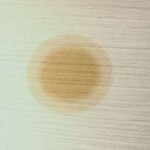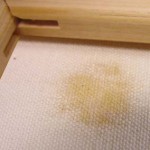 This article is an attempt to establish a common language and an understanding of acrylic dispersion grounds, the attributes of the grounds and how those attributes function within the painting. This article will conclude with a very needed but mostly ignored effort to understand the development and necessity for a quality standard for grounds.
This article is an attempt to establish a common language and an understanding of acrylic dispersion grounds, the attributes of the grounds and how those attributes function within the painting. This article will conclude with a very needed but mostly ignored effort to understand the development and necessity for a quality standard for grounds.
Common Languages
Contemporary materials referred to as “gesso” or “acrylic gesso” could be more accurately described as “Acrylic Dispersion Grounds”. Acrylic dispersions are the binders most commonly used in artist acrylics. Mistakenly called “Acrylic Emulsions” by many people for many years, acrylic dispersions are much more widely used in artist materials than emulsions. For technical clarity and use in this article we will only use the descriptor “gesso” to describe the very traditional, chalk-filled, hide glue grounds.
The following definition from “The Artist’s Handbook”, Ralph Mayer Fifth Edition Revised and Updated, serves as an excellent reference to describe “gesso”.
Gesso is a viscous or liquid material applied as a coating to surfaces in order to give them the correct properties for receiving painting, gilding or other decoration. Mayer goes on to describe the general makeup of gesso: It is made by mixing an inert white pigment such as chalk, whiting or slaked plaster of Paris with an aqueous binder such as a solution of (animal protein) glue, gelatin or casein.
For this article, I will call the contemporary material widely used by artists to prime and prepare most substrates as an “Acrylic Dispersion Ground”. This, might be confusing at first, as nearly all manufacturers, including Golden Artist Colors have called their products “Gesso” or “Acrylic Gesso”.
For clarity: Gesso is (animal protein) glue, gelatin or casein based while Acrylic Dispersion Grounds are those grounds made with acrylic polymer. We also commonly refer to the process as, “To gesso a canvas.” This description will be technically confusing when we need to discuss Acrylic Dispersion Grounds as “gessoing”. “Gessoing” more strongly references the chalk-filled hide glue material. For our new common language, we may consider the idea of “priming” and the use of that word and action to describe what artists do with Acrylic Dispersion Grounds to prepare a substrate. Priming is the action of coating a substrate for additional coatings and finishes. Priming is a much more fitting description and so we’ll utilize that term for this article and in future references to what we formally knew as “gessoing” a substrate.
It needs to be understood however, that the market cannot make changes to its language and communication very quickly. Not even Golden Artist Colors can change rapidly enough to avoid confusion and some level of conflicting information in the marketplace. We will continue to see labels and literature for a long time to come that will reference Acrylic Dispersion Grounds as Gesso. We now have an opportunity to initiate that change within this conversation so that we may begin creating more clarity and technical accuracy in our language.
The Purpose of a Ground
Nearly all substrates such as canvas, linen, paper, wood and other panels require additional preparation before painting. The preparation differs, depending on the desired aesthetics of the work, the painting media being used and the qualities of the particular substrate itself. Generally speaking, the need to protect substrates from waterborne paint systems is much simpler compared to the technical requirements when using solvent or oil systems. Water migrating from sizes, primers and paints can affect some substrates, causing such problems as buckling papers and shrinking textiles. However, the impact on longevity compared to the need to protect canvas from oil differs.
Most substrates and thus artwork, can benefit from proper size and ground preparation if the aesthetics of the piece allows. Size and ground layers are employed to prepare substrates so that they are protected, more stable and consistent for accepting paint and other media. Although this article will not address all of the attributes of sizes, it is important to mention that sizes are typically applied directly to the substrate. “A size sinks into the support’s surface without forming a separate layer, whereas a ground is a distinct layer that gives the paint a toothy coating to grip and makes the support more evenly absorbent,” from “The Painter’s Handbook”, by Mark David Gottsegen.
Paintings are typically comprised of multiple media or materials. Not to confuse this idea with “multi-media art” or “mixed-media art” however most paintings should be thought of as composites of diverse materials. Assuming a “traditional” painting format of a stretched textile such as cotton canvas or linen and putting aside the stretcher bars as one material of the whole, we must consider the following relationships: the textile and size have an intimate relationship, forming the very foundation for a ground. The size and ground are the next layers in sequence and must be compatible both physically and chemically. Next the colored paint layers, are the most obvious portions of the painting, and also serve to support the structure of the painting. And finally, the protective coatings such as an isolation coat and a varnish when employed need to be considered as an integral part of the painting. When considering the complexities of such combinations, it is important to understand the relationships between each material, how they are applied, their movement over time and ageing properties of each to assure the longevity and stability of the painting.
Attributes of Acrylic Dispersion Grounds
Perhaps, originally, the intent of making “acrylic gesso” was to offer something very similar to a traditional gesso. It seems reasonable that the need to emulate the properties of gesso for oil and acrylic painters began as a very specific focus that naturally broadened due to the immense diversity available in acrylics. A new way to think about primers and gesso is that a gesso for oil paint mindset need not apply to acrylics. The attributes afforded by acrylics started to address many of the shortcomings of traditional gesso such as its brittle nature, limitations to stiff or rigid substrates, the inconvenience of mixing and preparing the gesso and the ease of application with minimal technical requirements.
As a category of materials, acrylics provide many diverse attributes. There may be no other artist material that has such diverse possibilities. These variables allow formulators to create many unique products for the artist with highly specialized performance attributes. Acrylics may range from very soft and flexible to very hard and brittle, easily cracking when flexed. Some acrylics formulate well with a wide range of pigments and additives while others have limitations. We’ll limit our discussion here to the attributes of acrylics most related to grounds. This limited discussion is in no way complete as there are many alternative uses for Acrylic Dispersion Grounds and many acrylic products that can be used as a ground.
Pigment Volume Concentration (PVC)
An acrylic’s capacity to carry pigment and filler solids is technically referred to as pigment volume concentration (PVC). As a category, acrylics provide a wide range of PVC. Some acrylics have higher PVC tolerances than others. How much and what type of solids are loaded into the acrylic directly influences attributes like tooth, sheen, opacity, color and flexibility. While the artist will likely never think about PVC as an attribute, it is an important concept to understand related to other binders such as oil and alkyds, which carry solids differently, resulting in different attributes and performance when compared to acrylics.

easily removed from a smooth ground.
Left: Oil paint is adhered well to a toothy ground.
Tooth
Physical adhesion is largely accomplished through a “lock and key” mechanism commonly referred to as “tooth”. A toothy surface has adequate micro-texture to allow a subsequent coating to physically conform to that texture. When the coating is able to conform and create an intimate interface with the toothy ground, good mechanical adhesion is accomplished. In contrast, a very smooth and glossy surface such as glass, which has no tooth and provides minimal physical adhesion unless sandblasted or etched. Tooth of a ground should be uniform and consistent, as to not interfere with the artist’s end results.
Flexibility
When employing flexible substrates, flexibility of the painting media and supporting materials are likely necessary to avoid such defects as cracking, and possibly delaminating adhesion failure of the paint. Acrylic Dispersion Grounds are typically formulated with relatively flexible acrylic polymers so that they can maintain some level of the flexibility of the substrate and not crack themselves. This flexibility of the ground is well suited and generally matches the physical dynamics of acrylic paints and mediums on cotton canvas duck. Flexibility of the ground is important for stretching or re-stretching already primed/painted substrates. It must be mentioned that there are some concerns about the flexibility of acrylic grounds for use with oil paints, especially as the oil paint films become harder and more brittle with time. The acrylic ground maintains its flexibility over time rather well compared to linseed oil primers and paints. These materials may not provide the support a less flexible oil paint requires without a size or multiple coats of acrylic dispersion ground to stiffen the canvas.
Whiteness
The color of a ground is important aesthetically to both the artist and the artwork. A consistently colored ground is important so that there is minimal influence on color perception and color mixing while painting. The color (typically white) creates a visual reference point for the artist that could otherwise confuse or distract accurate color usage. Equally important, having an equitable colored surface creates uniformity in the aesthetic affects of the final piece. Acrylic Dispersion Grounds can be easily tinted with acrylic color, presenting the artist more opportunities. A less obvious feature of a white ground is that it is typically more color stable than the substrate. Many substrates, especially those containing cellulose such as vegetation fiber (cotton and linen) or wood and paper have tendencies to yellow and discolor over time. Grounds protect this discoloration from affecting the aesthetics of the artwork.

Absorbency
Acrylic Dispersion Grounds, like all grounds are formulated to provide enough absorption to allow some level of penetration of paint to promote adhesion as well as allowing the artist to begin her process with washes if so desired. Absorption and adhesion are related because the physical penetration of the binder-rich acrylic paint into the substrate or ground provides good anchoring of the acrylic. More importantly, when using oil paints, the absorption needs to allow enough linseed oil to penetrate without starving the paint layers of the vital binding oil. When employing washes, standard grounds provide enough absorption to allow a fair amount of wash and layering. However, the level of absorption a ground provides can be adjusted through formulation. An alternative ground such as GOLDEN Absorbent Ground can dramatically increase the staining of a wash into the substrate.

image. The other half has a ground / size
combination that blocks the migration.
Support Induced Discoloration
Abbreviated as SID, water miscible components of the substrate may be wet out by the water in grounds or paint layers, becoming transferred and lodged in the ground and paint during the drying process. Drying of acrylics is largely due to evaporation of water and other volatiles. The wicking action that occurs during evaporation can transfer these water miscible components from the substrate into the paint, resulting in a discolored, typically yellow or tan cast of color. SID is most noticeable with white and very light colors as well as with clear gels and mediums.
Grounds may or may not block SID from occurring. Many grounds do not. The use of a size such as GAC 100 will help reduce the affects of SID. GOLDEN Technical Support suggests the use of GAC 100 as a size for cotton and wood substrates followed by a minimum of three coats of White Gesso. If the substrate is suspected of being highly concentrated with water miscible components such as questionable grades of cotton duck canvas, hardboards and certain species of wood, additional coats are recommended. It is also possible to pre-wash cotton or linen to dramatically reduce the yellowing affects of SID.

Oil Blocking
Related to the ability of an Acrylic Dispersion Ground to absorb oil, it must not allow oil to fully penetrate through to the substrate. This is especially important when painting on canvas as the acidity of the linseed oil increases as it oxidizes and will “burn” the cotton duck canvas. Most grounds do not block oil completely and require the use of a size to further protect the cotton duck canvas. The same recommendations for SID apply to oil penetration protection.
Alternative Grounds: Beyond “Gesso”
Because acrylics are so adaptable and diverse, there are many opportunities to utilize products not commonly thought of as a ground, as a ground. Generally, artist acrylics are flexible and adhere very well to one another, practically eliminating any rules or limitations often experienced with other painting media. Gels, Molding Pastes, Mediums and Colors such as Heavy Body, Fluid, Matte, and High Load Acrylics can be and often are, used as grounds. There are also specially formulated acrylic grounds to consider. Each one provides a certain property that may be valuable for some artwork or experimentation in a new area of application.
Absorbent Ground
Originally formulated to mimic the absorbency of watercolor paper, Absorbent Ground has been used in many unique applications. The special fillers in this formula are highly absorbent and will lend to watercolor-like effects with acrylic paints, watercolors and other dilute, thin washes. This ground requires the use of a primed substrate for adequate adhesion.
Acrylic Ground for Pastels
Designed and formulated to allow the artist to transform most substrates into pastel paper-like surfaces, Acrylic Ground for Pastels is a very unique product. Special functional fillers chosen for optimized particle size and shape and formulated with the appropriate solids loading, allows this ground to produce a surface suitable for pastel, colored pencil, paint and other drawing media.
Translucent Grounds
Translucent Grounds are still considered “experimental,” meaning they are only available from the GOLDEN Custom Lab. These grounds tend to be good drawing and painting grounds. Golden Artist Colors has optimized the use of specialized functional fillers in a ground formula allowing very translucent, practically clear, toothy grounds that accept painting and drawing media very well. These grounds hold pencil, charcoal, pastel and paint allowing distinction of line and blendability of the media.
Quality Standard Development


It is obvious that given the importance of sizes and grounds to the overall stability and success of a painting one would think that there are already standards that define the very specific relationships and performance attributes of these materials. The ASTM D01-57, subcommittee for Artists Paints and Related Material, have developed several standards over the last 30 years, many of which have become commonplace within our industry. The Artists Materials ASTM subcommittees are composed of manufacturers, consumers, educators, students and special interest participants such as scientists and other experts in various markets and disciplines. This dynamic mix of participants helps to facilitate collaboration and assures the development of valuable standards that serve all parties involved. One would be hard-pressed to buy a tube of paint without seeing the ASTM Lightfast Standard, or D4236, the Safety Standard for Chronic Toxicity. These standards have been developed to assure artists of at least a common language for these materials and a minimum level of performance. These documents prescribe test methods to assure desired quality attributes are achieved for a particular product or family of products. The American Standardization of Tests and Materials International (ASTM) is a standard development and writing organization in which Golden Artist Colors participates.
It is critical to understand that there are currently no quality standards in place for gessos or grounds. There are architectural primer standards that are used for reference while developing an artist ground standard, however, for manufacturers of artist materials, there are no specific guidelines or standards. The fact that such a foundational product does not have a quality standard does a disservice to artists depending upon these materials to perform. Through the ASTM D01.57 “Artist Paints and Related Materials” Subcommittee, GOLDEN is specifically interested, and has been leading the efforts in writing the first quality standard for Acrylic Dispersion Grounds. It must be recognized that GOLDEN does this work with tremendous collaboration from colleagues and competitors within the subcommittee.
The focus of the Acrylic Dispersion Ground quality standard is to identify and assure the most critical attributes for a ground are met. The attributes mentioned earlier are all considered in the testing and development of a quality method. Standard development is a process, which takes time. The testing and work is carefully conducted and repeated to assure purposeful accuracy. The subcommittee is required to vote for ultimate approval of the standard document. Therefore, the scientific approach of testing and publishing the work for critique is essential. The design of the experiments is proactively agreed upon at the subcommittee level, reaching consensus for experimentation and expected results. As work is presented, ideas and perspectives are shared and thus the process develops over time.
Currently, a fairly comprehensive quality survey of commonly available “gessos” has been conducted. This survey has uncovered a large amount of variability in several attributes such as tooth, sheen and viscosity. While quality standards do not need to make all offerings in the market identical, significant variations may or may not be an indicator of highly variable performance and quality. There are likely reasons and needs to have grounds as thin as heavy cream and as thick as heavy pastes. However, knowing that the mechanical adhesion of paint relies on the tooth of the ground, identifying and standardizing a range for tooth may be necessary.
With the common language agreed upon and understood, we can move not only the current products and applications forward for improved longevity and quality, we can continue the quest toward assuring these improvements through robust standards. As newer grounds and more and more pre-primed canvases come onto the marketplace, it is more critical than ever that the arts community supports and demands these standards. It is true that standardization development is a slow and careful process, but it is one worth the investment in time and resources in order to serve the artist and our shared legacy. Your painting success rests on the ‘Ground’.
About Bill Berthel
View all posts by Bill Berthel -->Subscribe
Subscribe to the newsletter today!
No related Post

Would using a 50/50 mixture of molding paste and gesso present any problems when used as a ground?
Hi Mary –
No, it would not cause any problems. It will make the gesso a little less absorbent and likely a touch less opaque if applied thinly, but in terms of adhesion, flexibility, etc, you should be fine.
What does your research say about painting with oil on an aluminum plate?
Hello, Féline.
We have yet to do formal testing of oils on aluminum panels, but for interior applications, you have several options to start the process. Commercial primers, called DTM, or “Direct to Metal” primers are a good start. These bonding primers will state their use and preparatory instructions to increase adhesion. XIM brand makes several DTM bonding primers you can use, including UMA (Urethane Modified Acrylic) and one called 400 White. You can also use alkyd primers such as those sold by Sherwin Williams and Ben Moore. These primers can be applied, allowed to cure, and then acrylic gesso may be used prior to oil painting. There shouldn’t be anything in the oil that causes issues over the primers and base aluminum panels that we are aware of. We do plan on doing some testing to verify this, at some point in the future!
– Mike Townsend
For those of us that are not technical and are just beginning, I wish people would answer a question with a simple yes or no. lol
Can I use Pebeo Bindex, acrylic binder, to prime a wood panel for oil painting? YES or No.
Thanks in advance for simplicity!
Unfortunately, we do not have a quick yes or no whether this can be used as a ground for oil paints, as we are not familiar with this product, nor have we ever tested this product. You might consider contacting Pebeo and see if they recommend it in this application.
We hope this helps!
Hi! I was wondering if I could get some clarification on tooth. From reading this (“A toothy surface has adequate micro-texture to allow a subsequent coating to physically conform to that texture.”) I take away that the tooth is on a microscopic level and not necessarily a tactile observation. I’ve heard a few painters remark that a gesso that is “slick” to the touch doesn’t have enough tooth to adhere the paint, but is this confusing what tooth actually is? I’ve heard that the Golden acrylic gesso is slicker than others, but is it still toothy on a microscopic level? Thank you!
Hello Tony,
appologies for our late reply. We have already communicated this trhough the MITRA Forum, but for the sake of other readers here the same reply: A toothy surface isn’t necessarily rough to the touch. On a microscopic level a matte surface shows a fairly toothy terrain. In terms of adhesion even a glossy acrylic underpainting or clear primer will work fine for oils. Acrylic dispersions form relatively porous films and linseed oil can sink into the microscopic pores and anchor. The question of what type of acrylic or oil primer to use is really dependent on personal preference. My colleague Greg Watson wrote a nice article about working with oils over GOLDEN Gesso here: https://justpaint.org/differentiating-between-acrylic-gesso-and-williamsburg-oil-ground/
Best,
Mirjam Hintz
Hi, I work with watercolors and ink and am wondering what kinds of gesso are possible to use.
Can I use watercolor on a regular acrylic gesso? Do I need a primer with regular gesso?
What kind of primer should be used with an Absorbent Ground?
Can a chalk gesso be used with watercolor and other water-based inks and paints instead?
Would a chalk gesso crack on a stretched canvas?
Can acrylic ink and/or acrylic paint be used with watercolors on the Absorbent Ground?
Hello Alice, thank you for your question. We have not tested a wide range of inks, but we can speak to the use of watercolor. Diluted transparent watercolor can be used on acrylic gesso with lovely results, if allowance is provided for the difference in how the paint interacts with a less absorbent and differently-textured surface. An example of this would be how easily it is to lift dry watercolor from a gessoed surface which in turn makes glazing almost impossible. It might be necessary to modify techniques for the new surface. Modification of techniques is also helpful for the acrylic-based watercolor grounds that are currently being marketed (ours can be found here). These surfaces will all interact with diluted watercolor differently than paper does, and so are best thought of as avenues for exploration in different directions rather than substitutions for paper. ON these surfaces, often lifting color is easy, glazing is difficult, and using a less loaded brush makes it easier to control the diluted watercolor paint. We would not recommend combining or layering rabbit skin glue gesso and acrylic gesso. We have not tested painting with watercolor on rabbit skin glue gesso, but suspect the water-sensitivity of the ground might complicate applications. Please email us at [email protected] if you have more questions, and happy painting!
I forgot to clarify that I wish to work on stretched canvas.
Thank you
Hello Alice, when working on stretched canvas with watercolor or gouache, no matter the ground used on the surface (including adhered watercolor paper) we recommend that the paints be used in the style of transparent watercolor, in other words greatly diluted with water. Thicker applications of these paints might crack or even pop off of a flexible surface. We recommend testing on the intended type of surface before use for an artwork, and that would include testing the combination of any mixed media and the planned method of protecting the surface if that is needed.
Thanks very much, Cathy. Now I am much less confused about working on canvas with watercolor and inks. Acrylics on any kind won’t work on an oil ground at all.
-I am beginning with raw canvas after working for a number of years on mostly hot press watercolor paper.
I found the following information online recently-
-I use watercolors as a first layer, then pour and paint acrylic inks. I work very wet often.
-and I can apply gesso to the raw canvas and then a layer of watercolor ground onto the gesso
—Will synthetic ox gall be useful to try with this preparation? I have never used it before.
Might the Watercolor Medium be used to make it less likely to crack? (upon the watercolor ground before painting with watercolor and pouring acrylic inks)
Hello Alice,
We do have a Just Paint article on the QoR Mediums.
We think we answered most of this comment in the post above this one. Watercolor Medium may make watercolor paint less likely to crack when the paint is thickly applied, but we still recommend using thicker applications of watercolor and gouache on a rigid surface. In addition, all of our tests of varnishing watercolor have involved traditional transparent watercolor applications on paper or watercolor grounds. We do not have recommendations for how to protect a thickly applied layer of watercolor that will not be behind glass. We also have not tested any of our products with acrylic inks. We have tested with alcohol inks, and found the results to be unpredictable.
Thanks very much, Cathy. Now I am much less confused about working on canvas with watercolor and inks. Acrylics on any kind won’t work on an oil ground at all.
-I am beginning with raw canvas after working for a number of years on mostly hot press watercolor paper.
I found the following information online recently-
-I use watercolors as a first layer, then pour and paint acrylic inks. I work very wet often.
-and I can apply gesso to the raw canvas and then a layer of watercolor ground onto the gesso
—Will synthetic ox gall be useful to try with this preparation? I have never used it before.
Might the Watercolor Medium be used to make it less likely to crack? (upon the watercolor ground before painting with watercolor and pouring acrylic inks)
Hello Alice,
If a heavily diluted layer of watercolor is beading up on a surface, adding a little surfactant to the water used to dilute paint may help the wash ‘wet out’ the surface without beading up. Synthetic Ox Gall and Ox Gall are both concentrated surfactants, and should only be used by first diluting with water. A starting ratio for QoR’s product is 2-5 drops in eight ounces of water. Surfactants do not improve adhesion. We would consider layering watercolor and acrylics to be experimental. We do recommend using Gesso before using QoR Watercolor Medium. We hope this is helpful, and if you have more questions, please email the Golden Materials team at [email protected].
Very helpful, Cathy! Thanks very much!